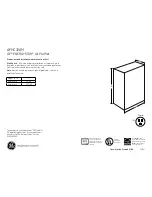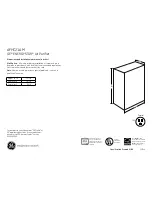
21 Changi South Street 1 Singapore 486777 Phone: +65 65420833 Fax: +65 65426920
E-mail: [email protected] Website:
www.escoglobal.com/ductless
USER SECTION
CHAPTER 1 – BASIC PRODUCT INFORMATION
Activated carbon filters are suitable for use with many chemicals but this is dependent on a number of
factors. In general, chemicals with a relative molecular weight over 30 and a boiling point higher than
60
o
C or 140
o
F can be adsorbed with a relatively high efficiency by activated carbon filtration.
Further variables include the amount of vapours being generated in the hood either through general
evaporation or as a direct result of experimental procedures. Naturally, the lower the concentration of the
chemical or the amount released in the hood in vapour form, the lower the safety risk to personnel. Other
factors involving the nature of the chemical(s) used in the fume hood play a role. For example, larger
molecules are adsorbed more easily by activated carbon. In addition, less soluble compounds are
adsorbed more easily than more soluble compounds. In the case of organic compounds, branch-chain
organics are more easily adsorbed than straight-chain organics.
Environmental factors may also affect the adsorptive efficiency of the hood. The ambient temperature of
the laboratory and the gas must be kept to a minimum. The higher the ambient temperature the lower the
adsorptive efficiency of the carbon filters. Relative humidity must also be kept to a minimum since an
especially high relative humidity can cause the activated carbon filter to adsorb water molecules in place
of chemical vapours.
The construction of the filter also affects the adsorption efficiency of the hood. A filter with a thicker
media bed will have a longer contact time in which a larger amount of chemical vapour will be deposited
in the filter by physical absorption.
1.2 AIRFLOW PATTERN INSIDE THE CABINET
1.
An inflow air curtain from the
ambient
environment
into
the
cabinet with an average velocity of
0.5 m/s or 100 fpm is induced by
the cabinet blower system.
2.
The inflow flushes the entire work
zone of the cabinet; within the main
chamber of the cabinet; negative
pressure (relative to the ambient
environment) is maintained in order
to ensure that no chemical fumes
or vapours escape the work zone.
3.
Air is taken through an activated
carbon filter mounted in the interior;
this removes all fumes from the
exhaust air stream; exhaust air is
re-circulated directly back to the
room from the top of the cabinet.
2. Inflow flush work zone
1. Inflow air provide
operator protection
3. Exhaust air is carbon-filtered providing
environmental protection
12
Summary of Contents for ASCENT OPTI BASIC
Page 2: ......
















































